Fast Facts
- When: 1st to 14th July 2024
- Where: Wimbledon, London
- Watch: Live on BBC
- Official Website: Wimbledon Website
The crème de la crème of tennis will once again converge on SW19 for the 135th incarnation of the Wimbledon Championships which will begin in early July in 2024, running for two weeks between the 1st and the 14th. The strawberries and cream will be flowing, but who will have the chance to put the champagne on ice at the tournament’s end?
The Championships, as it was formerly known is one of the most prestigious tennis tournaments in the world and forms just one of the four majors that are undertaken every year. It’s arguably the highest profile tournament as well, due it’s history and also because it’s one of very few that are played on grass.
Existing Customer Free Bets & Money Back Offers
Note: Offers will appear here nearer the event as and when they become available.
Stats Articles
- How Many Qualifiers & Unseeded Players Have Won a Tennis Major?
- How Often Do Tennis Players Lose After Going 2 Sets Up in the Grand Slams?
- How Many British Tennis Players Have Won Wimbledon?
- Grand Slam Winners in Tennis: Which Players Have Won All Four Major Tournaments?
Event Stats
Wimbledon Singles Finals – 2014 to 2023
| Men’s Champion |
Men’s Runner-up |
Women’s Champion |
Women’s Runner-up |
|
|---|---|---|---|---|
| 2023 | Carlos Alcaraz | Novak Djokovic | Marketa Vondrousova | Ons Jabeur |
| 2022 | Novak Djokovic | Nick Kyrgios | Elena Rybakina | Ons Jabeur |
| 2021 | Novak Djokovic | Matteo Berrettini | Ashleigh Barty | Karolina Pliskova |
| 2020 | Tournament cancelled | |||
| 2019 | Novak Djokovic | Roger Federer | Simona Halep | Serena Williams |
| 2018 | Novak Djokovic | Kevin Anderson | Angelique Kerber | Serena Williams |
| 2017 | Roger Federer | Marin Cilic | Garbine Muguruza | Venus Williams |
| 2016 | Andy Murray | Milos Raonic | Serena Williams | Angelique Kerber |
| 2015 | Novak Djokovic | Roger Federer | Serena Williams | Garbine Muguruza |
| 2014 | Novak Djokovic | Roger Federer | Petra Kvitova | Eugenie Bouchard |
Top 16 Seeded Players Stage of Elimination in 2023
| Seed | Men’s Singles | Women’s Singles |
|---|---|---|
| 1 | Carlos Alcarz (Champion) | Iga Swiatek (Quarter-Finals) |
| 2 | Novak Djokovic (Runner-Up) | Aryna Sabalenka (Semi-Finals) |
| 3 | Daniil Medvedev (Semi-Finals) | Elena Rybakina (Quarter-Finals) |
| 4 | Casper Ruud (2nd Round) | Jessica Pegula (Quarter-Finals) |
| 5 | Stefanos Tsitsipas (4th Round) | Caroline Garcia (3rd Round) |
| 6 | Holger Rune (Quarter-Finals) | Ons Jabeur (Runner-Up) |
| 7 | Andrey Rublev (Quarter-Finals) | Coco Gauff (1st Round) |
| 8 | Jannik Sinner (Semi-Finals) | Maria Sakkari (1st Round) |
| 9 | Taylor Fritz (2nd Round) | Petra Kvitova (4th Round) |
| 10 | Frances Tiafoe (3rd Round) | Barbora Krejcikova (2nd Round) |
| 11 | Felix Auger-Aliassime (1st Round) | Daria Kasatkina (3rd Round) |
| 12 | Cameron Norrie (2nd Round) | Veronika Kudermetova (2nd Round) |
| 13 | Borna Coric (1st Round) | Beatriz Haddad Maia (4th Round) |
| 14 | Lorenzo Musetti (3rd Round) | Belinda Bencic (4th Round) |
| 15 | Alex de Minaur (2nd Round) | Liudmila Samsonova (1st Round) |
| 16 | Tommy Paul (3rd Round) | Karolina Muchova (1st Round) |
Schedule
- Qualifying – Monday 24th to Thursday 27th June 2024
- 1st round – Monday 1st Tuesday 2nd July 2024
- 2nd round – Wednesday 3rd & Thursday 4th July 2024
- 3rd round – Friday 5th & Saturday 6th July 2024
- 4th round – Sunday 7th & Monday 8th July 2024
- Quarter-finals – Tuesday 9th & Wednesday 10th July 2024
- Women’s Semi-finals – Thursday 11th July 2024
- Men’s Semi-finals – Friday 12th July 2024
- Women’s Final – Saturday 13th July 2024
- Men’s Final – Sunday 14th July 2024
Schedule above is subject to alteration.
About The Championships, Wimbledon
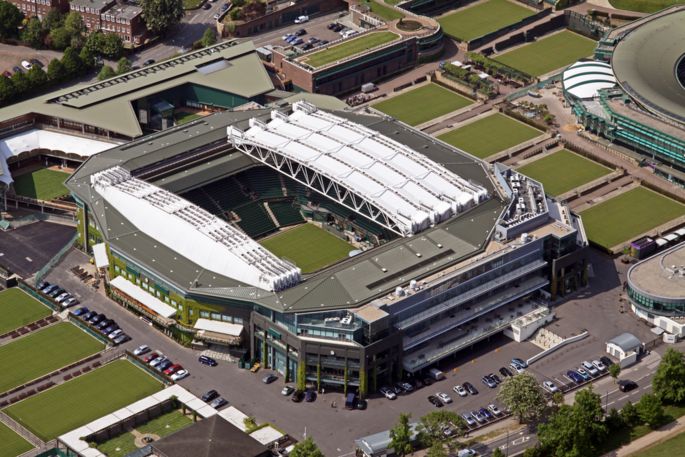
As a sport, tennis features four chief events that are referred to as ‘Grand Slams’. Of these, Wimbledon is actually the oldest, first taking place in 1877. Back then, the venue was known as ‘The All England Croquet and Lawn Tennis Club’ and it was the first venue in the world to host a lawn tennis tournament. Whilst there are countless tennis clubs around the world these days, lawn tennis is still far less popular than clay and hard court, especially at a professional level.
Wimbledon has eighteen grass courts that are suitable for tournament play, with Centre Court being the highest profile of them. It’s here where the majority of the finals are played. The first final in 1877 was won by Spencer Gore on Centre Court and was watched by around 200 spectators. These days the capacity allows for more than 15,000 people to watch the final matches of the tournament
Formation and Development of The Championships
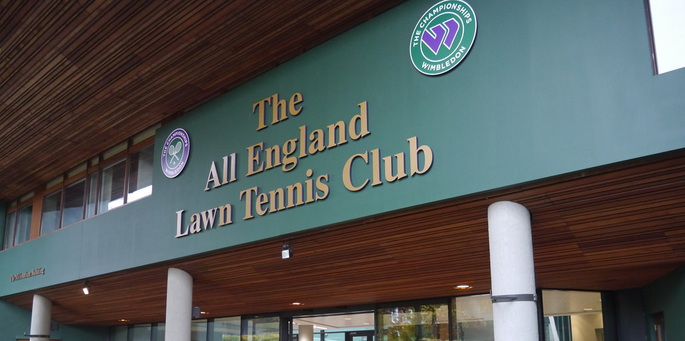
Though Wimbledon is now known at the home of tennis in England, it was originally formed as ‘The All England Croquet Club’. Tennis wasn’t played there until 1876, about a year after Major Walter Clopton Wingfield invented it as an outdoor alternative to a similar sport known as ‘Real Tennis’.
The inaugural Lawn Tennis Championship was played in order to draw attention to the fact that club had changed its name to include the words ‘Lawn Tennis’, with new rules being drawn up for the occasion to replace those invented by Marylebone Cricket Club. The only major differences between those rules and the ones used today are the likes of the height of the net and the distance of the service line from it.
Title Change and New Events – 1882 to 1913
There have been countless changes to Wimbledon over the years, not least of which was the removal of the word ‘Croquet’ from the club’s title after tennis had become the principle sport by 1882. Eagle-eyed readers will know that it still says Croquet nowadays, which is because the word was re-added to the club’s title in 1899 for sentimental reasons. Other big changes include the addition of Ladies’ Singles and Gentlemen’s Doubles in 1884 and Ladies’ Doubles and Mixed Doubles in 1913.
Change of Location – 1922
The original Croquet and Lawn Tennis Club was located on Nursery Road, which was just off Worple Road in Wimbledon. The lawns at the club were all arranged around the principle court, lending it the feeling of being in the centre of proceedings and giving it the nickname of ‘Centre Court’. In 1922 the club moved to a new venue in Church Road, where it remains today. The principle court at its new location maintained the nickname of ‘Centre Court’, despite the fact that the other courts are longer arranged around it in quite the same way as they were at Nursery Road.
The Move from Amateur to the Open Era – 1968
There have also been numerous rule changes that have been introduced since the tournament first got underway. Initially, for example, Wimbledon was essentially about the finalist defending his title, meaning that he only had to play the final match of the tournament prior to 1922. Initially, professionals were forbidden from playing in the competition and it was only open to amateurs, which didn’t change until the introduction of the Open Era in 1968.
Development of the Courts – 1997 to Present
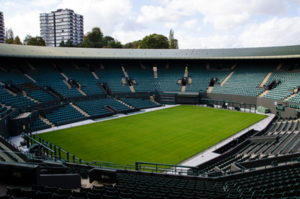
By Michael Frey, Wikimedia Commons
In terms of the physical appearance of the venue, one of the biggest alterations came in 1980 when four new courts were added to the North side. This change also meant that Centre Court was closer to being in the middle of the grounds for the first time. Most of the changes since then have been about modernising the venue, though there have been major additions such as the development of Number 1 Court in 1997. That came as part of redevelopment plans that too place throughout the 1990s and into the turn of the Millennium, culminating with the addition of a retractable roof in 2009.
Given that the tournament is hosted in England, it’s not a huge surprised that the weather can sometimes influence whether tennis is able to take place or not. The building of the retractable roof allows for tennis to be played on Centre Court regardless of whether or not it’s raining, meaning that the finals will no longer be held up thanks to England’s inclement weather.
In 2019, the Number 1 Court also had a retractable roof added, meaning even more game could be completed when there was rain.
British Success
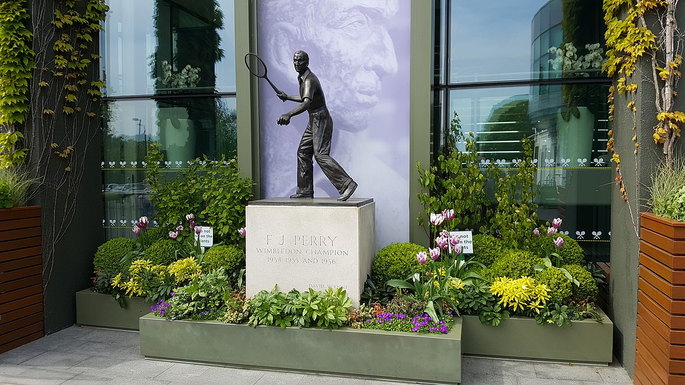
Tennis tournaments can often be just as partisan as the likes of football or rugby, in spite of the fact that they’re not known for that sort of thing. You only need to watch a match between a British player and someone from elsewhere in order to notice the zeal with which local supporters in the crowd get behind those representing them. Nevertheless, British players have not enjoyed a great deal success at Wimbledon over the years.
The first British player to win at Wimbledon was Fred Perry, winning the Men’s Singles championship in 1936, back when it was still only open for Amateurs. No other British player won the Men’s Singles until Andy Murray achieved it in 2013, repeating the trick three years later. Virginia Wade is the only British woman to have won a Wimbledon Singles title, which she achieved in 1977, seven years after first reaching the final. In 1984 Annabel Croft won the Girls’ Championship, which is something that Laura Robson repeated 24 years later. In 2023 Henry Searle became the first Brit to win the Boys’ Singles since Stanley Matthews in 1962.
Interestingly, British players have enjoyed far more success in the Doubles game. Every winner of the Men’s Doubles was British from its introduction in 1884 until 1907, for example, though there were no British winners between 1937 and 2011 when Australian players dominated. The Ladies’ Doubles have been dominated by American players over the years, though British players have still enjoyed sporadic success during that time. In 2007 Andy Murray’s brother Jamie became the first British player to win the Mixed Doubles for 20 years with his partner Jelena Janković.
Format and Participation
There are 5 main categories at Wimbledon, including the Men’s Singles, Women’s Singles, Men’s Doubles, Women’s Doubles and Mixed Doubles. The Singles event features over one hundred players at the outset, whilst the Men and Women’s Doubles include 64 pairings. Finally, the Mixed Doubles includes 40 pairings.
What’s unique about Wimbledon is that they also include a full schedule of junior events. This incorporates Boys Singles, Girls Singles, Boys Doubles, Girls Doubles. In addition to these there is also the Men’s and Women’s wheelchair Singles and Doubles.
Wimbledon Champions from 2023
| Tournament | Entrants | Champion(s) |
|---|---|---|
| Men’s Singles | 128 | Carlos Alcaraz |
| Women’s Singles | 128 | Marketa Vondrousova |
| Men’s Doubles | 64 | Wesley Koolhof & Neal Skupski |
| Women’s Doubles | 64 | Hsieh Su-wei & Barbora Strycova |
| Mixed Doubles | 32 | Mate Pavic & Lyudmyla Kichenok |
| Boy’s Singles | 64 | Henry Searle |
| Girl’s Singles | 64 | Clervie Ngounoue |
| Boy’s Doubles | 32 | Jakub Filip & Gabriele Vulpitta |
| Girl’s Doubles | 32 | Alena Kovackova & Laura Samsonova |
| Wheelchair Men’s Singles | 8 | Tokito Oda |
| Wheelchair Women’s Singles | 8 | Diede de Groot |
| Wheelchair Men’s Doubles | 4 | Alfie Hewett & Gordon Reid |
| Wheelchair Women’s Doubles | 4 | Diede de Groot & Jiske Griffioen |
| Wheelchair Quad Singles | 8 | Niels Vink |
| Wheelchair Quad Doubles | 4 | Sam Schröder & Niels Vink |
| Men’s Invitation Doubles | 8 | Bob Bryan & Mike Bryan |
| Women’s Invitation Doubles | 8 | Kim Clijsters & Martina Hingis |
| Mixed Invitation Doubles | 8 | Nenad Zimonjić & Rennae Stubbs |
With both the Men’s and Women’s Singles events, 108 of the 128 players are made up by world seedings in the weeks leading up to the event. There are then 8 Wild Cards handed out by the tournament committee, along with the remaining spaces being made up of qualifiers.
For each discipline, the tournament goes immediately into a knockout stage, with players being split into two halves in order to ensure that the top seeds are kept apart for as long as possible. As the tournament progresses players are knocked out in order to ensure that just two players are left in by the time of the final. The Men’s game features matches that are the best of 5 sets, with a ten-point tiebreak in the final set and a winning margin of 2 games to decide the winner. The Women’s game, on the other other hand, is the best of 3 sets and again has a ten-point tiebreak in the final set.
Seeding
At this point it’s worth pointing out how the seeding works for the competition. There are 104 players that enter the Men’s tournament and 108 players into the Women’s event, with those players entering on account of their international ranking at the time Wimbledon gets underway. As mentioned before, there are 8 Wild Card entrants into the competitions, as selected by the Wimbledon organisers, with the rest of the places taken up by players who entered tournament qualifiers.
In 1924 Wimbledon began to use a seeding system, though back then it was far simpler than it is nowadays. It was then simply a case of a country nominating its best four players. That system was replaced in 1927 for one based on merit and that version of seeding has been in place ever since. It is based on a player’s international ranking, but Wimbledon’s Committee also gives added weight to previous performances on grass courts. It’s only the top 32 players that are seeded and it is still the top 32 players in the world, even if their actual Wimbledon ranking puts them in a different order.
If you’re interested, the seeding formula is worked out as follows:
- ATP Entry System Position points
- + 100% points earned for all grass court tournaments in the past 12 months
- + 75% points earned for the best grass court tournament in the 12 months prior to that
To date, only Boris Becker in 1985 and Goran Ivanišević in 2001 have won the Men’s Singles whilst being unseeded. That is a slightly misleading statistic however, given that there were only 16 seeds in 1985 and Becker was 20th and the fact that Ivanišević had appeared in the Wimbledon final three times prior to 2001. His highest career ranking was 2nd and his low ranking in the tournament was due to him being injured for a long period before the tournament got underway. In 2023, Markéta Vondroušová became the first ever unseeded winner of the Women’s Singles Championship.
Grass Court Season Build-Up
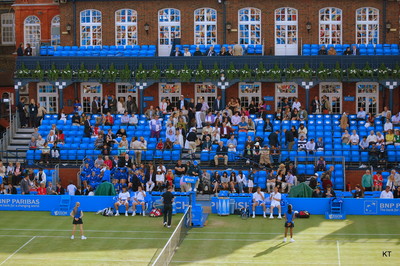
As suggested earlier, Wimbledon is the only one of the four tennis Majors that is played on grass courts. The first Major of the year is the Australian Open in January, which has been played on a hard court since 1988. The French Open is next up, taking place in late May into early June and the courts for that are clay. As a consequence, players need time to adjust to playing on grass and there are several opportunities for them to do this.
For ladies, the best option comes in the form of the Birmingham Classic, played on outdoor grass courts at Edgbaston Priory Club. Male players get the opportunity to warm up for Wimbledon by playing at the Queen’s Club Championships in London, whilst both men and women can take part in the Nottingham Open. There’s also a men’s tournament in Germany called The Halle Open that takes place at the same time as Queens. All four of these events occur in June in the weeks prior to the start of the Wimbledon Championship.
Scheduling
The Wimbledon Championship traditionally gets underway on the last Monday of June each year, around a fortnight after Queens has come to a close. That changed for the 2017 version of the event, however, which started on the first Monday of July; something has been repeated for the tournaments since. It lasts for fourteen days, meaning that the finals are held on a Sunday.
Middle Sunday & Manic Monday
The Wimbledon schedule was unique when compared to the other three Slams because no play used to take place on the middle Sunday. Exceptions to this rule were sometimes made if the weather had been particularly poor and matches needed to be played to make up time, but if all was well the middle Sunday was a rest day for competitors.
’Manic Monday’ was the name given to the Monday of the second week. There were numerous reasons for this, but the main one was that the junior and invitational matches didn’t start until week two of the Championship. That meant that the courts were full, given that the Men’s and Women’s tournaments both began their Last 16 games on the Monday. As a consequence, all 32 of the best players left in the competition played on the same day, which was unique to Wimbledon.
In 2021, play was introduced on middle Sunday to bring Wimbledon in-line with the other slams, and although Monday is still a busy day of play, it is no longer quite so manic with the round of sixteen games spread over Sunday and Monday.
A Tournament of Traditions
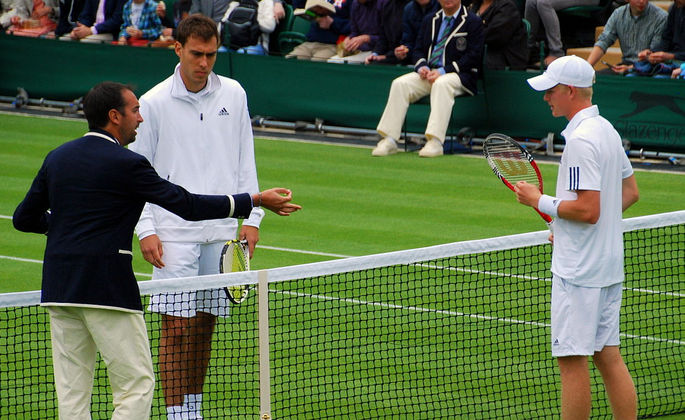
One of the most interesting things about Wimbledon is the eccentricities of the whole tournament. It’s very British, and with that comes a way in which they like to do things differently from other nations that host major tennis tournaments. For example, the ball boys and girls are strictly drilled on how to conduct themselves on court. Each will look identical and immaculate, whilst holding a level of professionalism that is the envy of other tennis events. They are far from the only tradition that takes place at the All England Club, however. Here’s a list of some of the Club’s official and unofficial traditions:
- Players are required to wear all white clothing (though some coloured accents are allowed)
- The Men’s and Women’s tournaments are referred to as Gentlemen’s and Ladies’, with juniors called Boys’ and Girls’
- The majority of tickets are released in a ballot every year
- The tennis manufacturer Slazenger have supplied the balls since 1902, the drinks company Robinsons has provided fruit juice
- The tournament is broadcast live on the BBC
- Fans eat Strawberries and cream during Wimbledon, with 34,000 kg of English strawberries and 10,000 litres of cream being consumed during the 2017 tournament
The Trophies
The Men’s Singles trophy is inscribed with the words ‘All England Lawn Tennis Club Single Handed Championship of the World’ and is located in the Wimbledon museum. The winner is instead presented with a replica which is three-quarters of the size of the original. Intriguingly, poised on top of the men’s trophy is a pineapple. That’s because few of these were seen in England when the trophy was being designed and it was a much sought after commodity, representing wealth and success.
The Ladies’ trophy is known as the ‘Venus Rosewater Dish’. As with the Men’s trophy, the real one resides in the Wimbledon museum and it is a replica one that is presented to the winner of the Ladies’ tournament. It is decorated with figures from mythology, which is where it gets its name from. The runners-up of both the Men’s and Women’s finals receives an inscribed silver plate, which is also given to the runners-up in the various Doubles finals. The winning Doubles partners each receive a silver cup.
Interesting Facts
Centre Court holds a Royal Box, where celebrities and members of the Royal family often gather for the high profile games. A strict dress code is required to enter the Royal Box, such as men having to wear a tie, with absolute zero exceptions. It was famously reported in 2015 that Formula 1 driver Lewis Hamilton was refused entry to the box because he wasn’t wearing a tie!
Roger Federer is the most decorated men’s player to have played at Wimbledon, winning the tournament on 8 occasions. He reached the final twelve times, losing on just four of them and winning the title twice more than the Amateur Era Champion William Renshaw managed. Martina Navratilova is the most successful female player, winning the tournament 9 times from 1978 to 1990. The most successful Male Doubles player ever is Todd Woodbridge, who won 9 titles, whilst Elizabeth Ryan is the most successful Female Doubles and Mixed Doubles player of all time, having won 12 and 7 titles of the disciplines respectively.
Here’s a look at some of the other facts from Wimbledon:
- Highest Men’s career match win percentage: Bjorn Borg (92.72%)
- Highest Women’s career match win percentage: Steffi Graf (90.36%)
- Most games won in a Men’s Final: 39 – Andy Roddick in 2009
- Most Men’s matches played in total: 223 – Jean Borotra
- Most Women’s matches played in total: 326 – Martina Navratilova
- Longest Men’s match: John Isner v Nicolas Mahut – 183 Games in 11 Hours 5 Minutes
- Longest Women’s match: Chanda Rubin v Patricia Hy-Boulais – 3 Hours 45 Minutes
- Consecutive winning points: 24 (entire set) – Yaroslava Shvedova beating Sara Errani in 2012
- Winner of most Men’s Championships in any discipline: Laurence Doherty – 13
- Winner of most Women’s Championships in any discipline: Martina Navratilova & Billie Jean King – 20 each
